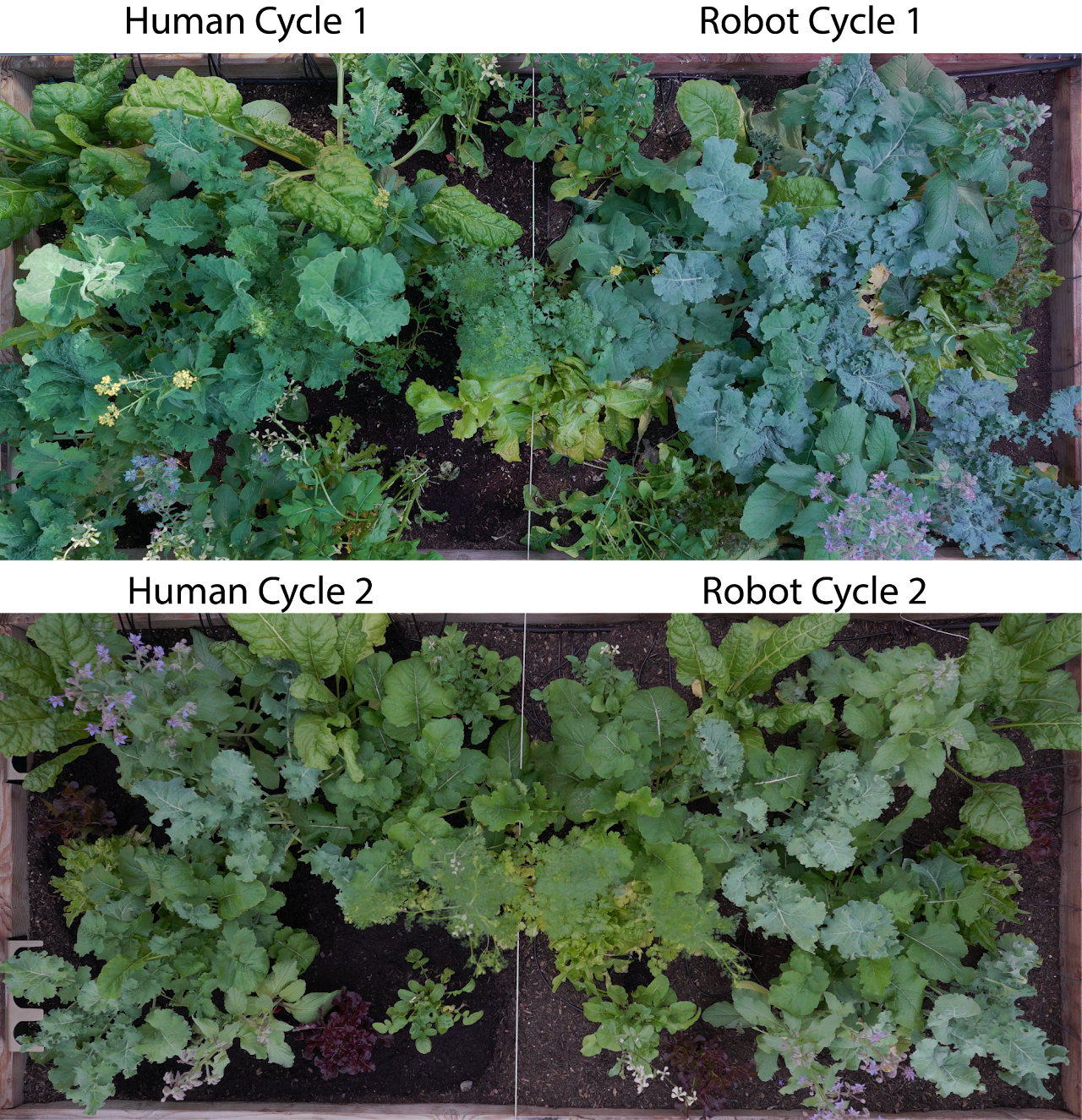Some jobs, it is assumed, cannot be performed by robots. Not as well as by humans, at least. Take gardening, for example. The growing and cultivating of plants surely requires an anthropic touch. And while that’s true to an extent, machines are gaining quite the green thumb thanks to rapid advances in technology. In a recent demonstration, a combination of AI and machinery tended a plot of crops just as well as human gardeners – while cutting water use by nearly half.
Putting robot gardening to the test
In a recent experiment, roboticists at the University of California, Berkeley sought to compare the performance of a robot with that of professional human gardeners in tending a polyculture garden. Polyculture gardens, with their diverse mix of plant species, offer benefits such as natural pest management, improved soil health, increased biodiversity, water conservation, and resilience to environmental changes.
The robotic gardener included a gantry farming system called AlphaGarden, which was guided by a software called AlphaGardenSim. Over two months, the robot autonomously performed tasks such as seed planting, irrigation, and pruning. The results showed that the robot achieved similar plant diversity and coverage to the human gardeners while using 44 percent less water. “AlphaGarden has thus passed the Turing test for gardening,” the researchers said.
Still, there is room for improvement. The cost of the hardware required for systems like the AlphaGarden remains a hurdle. The researchers also acknowledged the need for further improvements in refining the AlphaGardenSim plant-growth simulator to optimise water usage and explore variables like artificial light sources. The latter is particularly important as the adoption of vertical and indoor farming increases.
The benefits of robot gardeners
Robots offer several advantages over humans in gardening. They excel in efficiency, precision, and handling labour-intensive tasks like weeding and planting. Robots can optimise resource usage, such as water and fertilisers, leading to sustainable practices. They are well-suited for large-scale operations and can work around the clock, increasing productivity. Moreover, using robots minimises safety risks for humans (handling sharp tools, exposure to potentially harmful substances) and promotes accessibility for individuals with physical limitations. Finally, robot gardening has the potential to address labour shortages in agriculture and thereby improve food security.
Collaboration between humans and robots is key
It’s important to recognize that human expertise remains vital, and a combination of human and robotic collaboration is the key to effective and sustainable gardening practices. Humans will provide the creative vision and deep understanding of plant biology, ensuring the selection of suitable crops and maintaining biodiversity. They will make informed decisions based on plant health, growth patterns, and environmental factors.
Robots, meanwhile, will handle labour-intensive and repetitive tasks with precision and efficiency. They will autonomously perform activities such as planting, weeding, and pest control, optimising resource usage and minimising waste. Equipped with advanced sensors and AI algorithms, robots will collect and analyse data, providing real-time insights into soil conditions, water needs, and plant health. This information will guide human gardeners in implementing sustainable practices, such as precision irrigation and targeted nutrient management.
Together, humans and robots will create a harmonious ecosystem where technology augments human capabilities and empowers us to cultivate gardens that are environmentally friendly, highly productive, and in harmony with nature.
The post Using Half the Water, a Robot Gardens Just as Well as Humans appeared first on Digital for Good | RESET.ORG.


